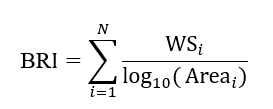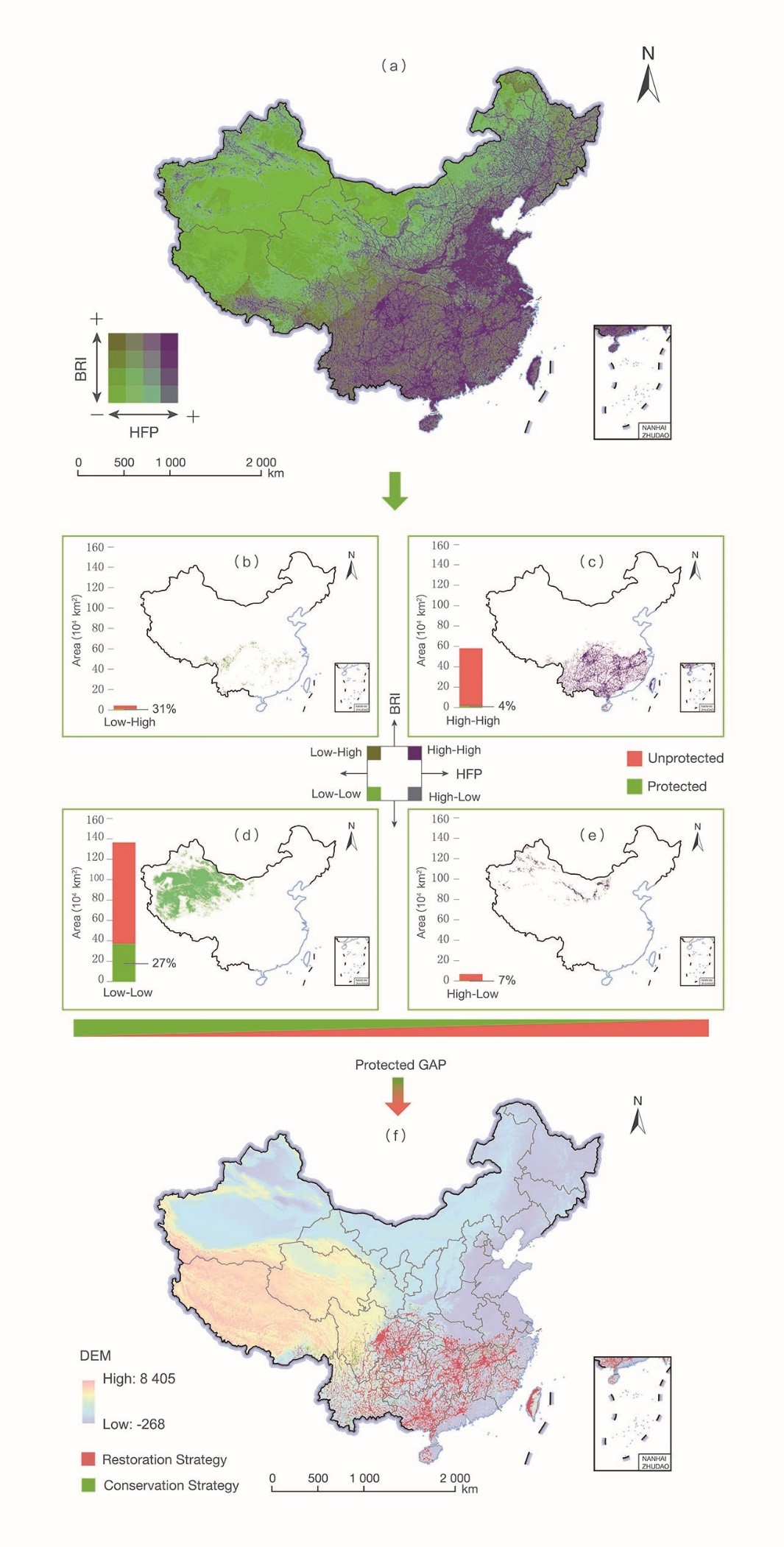China's plant diversity: risks and conservation strategies(2020)
| Highlights |
| The Biodiversity Risk Index (BRI) that describes the risk of extinction is more widely applicable than the Red List Index, which is based on multiple dynamic assessments. In areas facing high risks and high pressures from the compounding effect of biodiversity risks and anthropogenic pressures, protected areas only cover 4%. Developing conservation and restoration strategies tailored to the local realities to address conservation gaps will help improve the efficiency of conservation and halt species loss. |
Background
Human activities and land use have brought about unprecedented pressures and stresses on the natural environment, leading to the extinction of species in their thousands. In order to achieve the ambitious SDG Target 15.5 (i.e. to take urgent and significant action to reduce the degradation of natural habitats, halt the loss of biodiversity and protect and prevent the extinction of threatened species), countries and the international community as a whole must, as the first order of business, identify ways and means to achieve these objectives at the spatial level and determine which areas should be given priority in management and conservation, to achieve the greatest synergy between the conservation and use of biodiversity.
In the past, when prioritizing conservation areas on the principle of minimum area and wider protection of species, attention was focused on the hotspots of species distribution rather than the risks of species extinction, to the neglect of the intensity of anthropogenic threats to species, thus greatly undermining the effectiveness of efforts to mitigate species loss. This study uses China's protected plants as an example and provides an analysis of key areas where protected plants are at risk and the sanctuaries where they seek refuge, by taking into account a range of factors, including species distribution, habitats, elevation and human activities, with the help of Big Earth Data. These sanctuaries are critical to the survival of many threatened species, but most of such high-value habitats remain unprotected. Conservation and restoration actions are imperative to halt the extinction of species.
Data used
① Distribution of species, Global Biodiversity Information Facility, National Specimen Information Infrastructure, Chinese Field Herbarium, China flora of plant, provincial flora, and local records.
② Digital Elevation Model, Big Earth Data sharing portal.
③ Land Cover product in 2018 at 300 m, European Space Agency.
④ Vector of Protected Areas, Big Earth Data sharing portal, Resource and Environment Data Cloud Platform, World Database on Protected Areas.
⑤ Human footprint map (McGowan, 2016).
Method
Integrating distribution data from multiple sources; factoring in habitat preferences of species and elevation limits; and filtering out areas unsuitable for species distribution by referring to land cover and elevation maps to bring the distribution range closer to actual distribution (Brooks et al., 2019). Optimizing the BRI based on the distribution of species and the risk categories of more than 30 000 plant species on the Red List of Chinese Species published by the Ministry of Ecology and Environment in 2016, using the following formula:


Areas with high risk of species extinction but low threat from human activities are concentrated in the high-altitude mountainous areas in northern Yunnan marked by an abundance of endemic species (Fig. 1b), whereas the top 25% priority areas with high risk of species extinction and high threat from human activities are located in the more developed southern regions of China marked by a high concentration of human activities (Fig. 1c). Western China has large swathes of relatively intact wilderness providing better habitats where species are in better shape and less threatened by human activities (Fig. 1d). Although Inner Mongolia and northern Xinjiang face high-intensity grazing, habitat fragmentation and other anthropogenic threats, northwest China as a whole is home to an abundance of ubiquitous species and the risk of species extinction there is relatively low (Fig. 1e).
It is worth noting that only 4% of protected areas are found in high-risk, high-threat areas (Fig. 1c) and 31% of protected areas are in high-risk, low-threat areas. Species in these areas generally are in the high threat categories and live in severely fragmented habitats, where the risk of biodiversity loss and conservation value are high. For the former, strategies should be in place to restore the fragmented habitats; for the latter, conservation strategies are required to expand the area under conservation as a priority, to protect the sanctuaries on which the survival of species depends. In low-risk and low-threat regions, protected areas cover 27%, most of which are wilderness with uninterrupted landscapes and minimum human modification. They boast the largest area of protected land and a relatively low biodiversity risk. In general, the coverage of protected areas is low in regions under high anthropogenic pressures, which were overlooked in the past. It is difficult to set up protected areas in fragmented and degraded habitats with high BRI. In those regions, the main strategy should be the restoration of habitats and strong legislation be put in place to limit the threat to habitats and mitigate the loss of biodiversity. Since extinction is irreversible, it is all the more important to be proactive in providing protection for the currently unprotected areas and the habitats of unique biodiversity, to improve human well-being and encourage economic development in non-high-risk regions.
Outlook
As a holistic measure of anthropogenic pressures, the Human Footprint (HFP) has become a powerful tool for predicting species extinction risk (Allan et al., 2019; Mokany et al., 2020). By collating HFP data, this study has identified hotspots where plant diversity is under threat, as well as sanctuaries of plant diversity in China. Drawing on the distribution of current protected areas, the study has mapped the gaps in the conservation of China's plant diversity and recommended tailored area-based conservation and management measures. The recommendations include the following: combining the creation of more protected areas to provide proactive protection with restoration management strategies that focus on management and mitigation of threats to protect habitats on which species depend for their survival; identifying areas for future protected areas expansion and important areas for enhanced habitat restoration management in China in order to achieve the SDGs; providing information on conservation gaps and useful methodologies for the implementation of national conservation action plans to halt biodiversity loss; and improving protected areas planning and the development of action plans.

